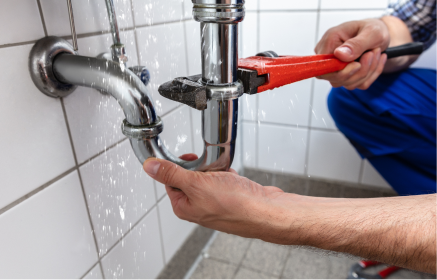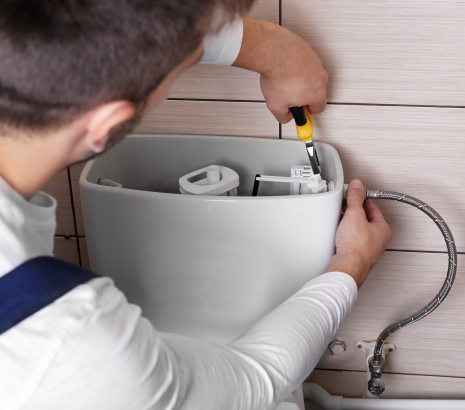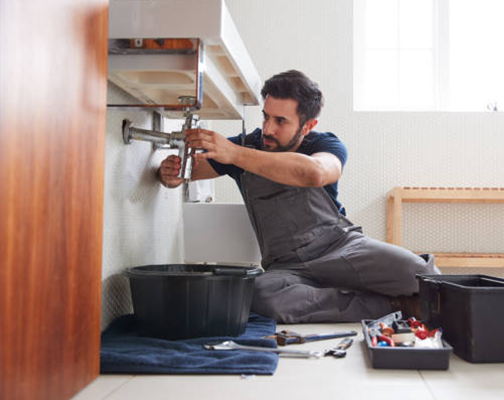
Why Does Hot Water Come Out of the Cold Faucet?
You wash your apple or vegetables in the sink, but the cold water is heated. Or it’s quite hot. In any case, homeowners in Melbourne frequently find themselves in this situation. Learn why your cold water faucet is not as cold as it should be and what you can do to fix it by reading about it.
It could be a small issue, or there could be a serious issue if you are getting warm or hot water from your cold faucets. This makes playing with time illegal. Always take immediate action to solve this problem, beginning with understanding its potential causes.
The most frequent causes of warm cold water include high water pressure, near proximity of pipes, recirculating plumbing, incorrect installation of heat traps, water expansion tank valves, and even something called the heating effect with Stormwater Plumber.
To help you comprehend and recognize these potential cold water-hot water reasons better, here are some details:
Water Pressure is High
When there is the proper amount of pressure in the water, high water pressure is fantastic. The rest of the home’s plumbing may start to experience issues if the water pressure is too high. One such issue is cold water that gets heated up.

Water Expansion Tank Valves
A one-way valve or pressure reduction valve on the water meter is necessary if you have a water expansion tank installed because, otherwise, hot water will flow into your cold water tap. One possibility is that the immersion heater’s thermostat has developed a flaw, causing any water that has been kept in it to boil over and spill into the cold water lines with Commercial Plumber Melbourne.
Poorly Installed Heat Traps
Your contractors must be sure to incorporate a heat trap in the water heating inlet while installing your plumbing pipes and systems. If not, the hot water that is kept in a water heater will leak out and mix with the cold water lines.
“Heating” Effect
Copper lines around your faucets are susceptible to heating up from hot water usage. The fixtures and the cold water may get extremely hot as a result of heat transfer when this occurs. However, this heating effect is just momentary; as soon as all the cold water has passed through the pipes, it will cool.
Respiratory Plumbing
Your cold water tap flowing hot can be the result of hot water recirculating plumbing installed when your home was built. Up until the heated water reaches the temperature valve that controls recirculation, you will continue to receive warm water from the cold water faucet.
Pipe Neighborhood
It is well known that the cold water-hot water problem is brought on by hot water plumbing lines that are too close to the cold water plumbing pipes. This gradually heats the pipes carrying the cold water, warming the water that travels through them. If a water heater is close by, the outcome is enhanced.
RATIONALE FOR WHY HOT WATER EMERGES FROM A COLD FAUCET
Too Close to Each Other
Cold and hot water lines that are parallel to one another and travel to the faucet might change the temperature of the water in the other pipe. The proximity of a water heater to the cold-water pipes might also cause this to happen. To maintain the internal water temperature of these pipes, think about insulating them.

Aeration Vents
Ventilation ducts may feel warm to the touch during the cooler months because of the warm air that passes through them. The water inside the cold-water pipes may start to warm up if they are in close proximity to the ventilation ducts. As winter progresses and the heating system is used more frequently, this can become a problem.
Defective Thermostats
Get ready for a flood of hot water if the immersion heater’s thermostat is malfunctioning or completely broken! In actuality, the hot water will be warmed and finally overflow into the cold water faucet. As a result of the temperature contrast, all of the stored water that is ready for use will emerge heated.
Fixing A Leaky Faucet
You can save money by taking care of a leaky faucet yourself. Be your own repairperson by performing the following actions:
- Turn Off The Water
Turning off the water is one of the most crucial stages in mending a leaking faucet. You risk flooding your bathroom if you don’t turn off the water to the sink. Locate the fixture shutdown valves beneath the sink, then turn the handles in a clockwise direction to turn off the water. If your faucet isn’t equipped with any shutoff valves, stop the house’s main water supply. Turning on the faucet will allow you to confirm that the water is shut off. If no water leaks out, your work was successful with Blocked Drains Melbourne.
- Take Apart the Faucet Handles
Depending on the type of fixture, there are different ways to remove the handles of a dripping faucet. For common fixtures, you can expose the handle screws by removing the handle’s top cap with a flathead screwdriver. Pull the handles off by unscrewing these.
- Pull the Valve Stem Apart.
You can see the inner valve stem or cartridge once the faucet handle has been removed. Additionally, this must be taken out. Brass valve stems on compression faucets can be unscrewed. Cartridge faucets are easily removed. You can consult your faucet’s handbook or find instructions online if you need help.
- Examine the Sink’s Components.
Once all the components have been removed, thoroughly examine them to determine what has to be changed to stop the leaky faucet. O-rings, seals, and rubber washers ought to be visible.
- Replace the Faulty Components.
Replace any worn-out, broken, or outdated components. The parts you require can be found at your neighborhood hardware shop. Bringing the old components into a hardware store and asking for exact copies is the best and simplest approach to getting the right parts for your leaky faucet.
- Clean the Valves
Once the stem or cartridge has been eliminated, have a look at the valve body. There is typically mineral accumulation. Pour white vinegar over the valve seat and let it sit there for a few minutes to clean it. Once removed, scrub the sink’s other components to bring back its smoothness and shine.
- Assemble The Faucet
Reassemble the faucet once you have the new replacements and have cleaned everything. In order to check for leaks, turn on the water supply.
These are only three of the various explanations for why hot water is dispensing from the faucet’s cold side. Calling your local plumber will allow them to determine which of these situations is the root of the problem and solve it for you. You may rest easy knowing that your cold water will be frigid and that the next time you turn on the faucet, you won’t unintentionally burn your hand.





